Trying to summarise the contents of Ben Highmore’s ‘Everyday Life and Cultural Theory’ is not a task I have been looking forward to. Having taken 44 pages of notes (displayed below) the book is a deep dive into several notable authors theories on the definition of ‘everyday life’, attempts at cataloguing and theories of how to change and communicate the ‘feeling’ of the everyday.
Highmore takes the reader on a whistle stop tour of concepts proposed by Frued, Simmel, De Certeau, Jameson and others. These concepts cover; what is ‘everyday life’? How do we define ‘everyday life’? Can we and how could we document ‘everyday life’? Should we document ‘everyday life’? Is ‘everyday life’ universal? And a dozen other variations on these questions.
In essence the culmination of the views discussed in this text is that ‘Everyday Life’ is a result of the commoditisation and standardisation of a capitalist economy.
Alluding to theories of Quantum Physics and Relativistic Theory, the concept of ‘Everyday Life’ is described as a temporally variable monotony. That time moves more slowly due to the structured nature of living and working in an environment that is carefully planned and controlled to maximise the productivity of workers in an economy focussed on deriving profit from time. It is the repetitiveness of action that extends the experience of time which becomes apparent to the participant of the experience incurring boredom. Further to this, the idea of modernity and productivity drives the class system creating inequality and therefore parts of society which are tied to the routine of low level employment or social support systems, areas in which there is now time or money to expand knowledge or experience and where movement and actions are further controlled by the rules and regulations of the system.
I mention Quantum Physics here as reference to the idea that a mundane act becomes extraordinary by the act of us recording, observing or communicating tat act, much in the way that an atom can’t truly be observed without affecting that atom therefore fundamentally changing the course of that event.
Highmore also discusses the techniques, methods and mediums that have been utilised in an attempt to document the experience of the ‘everyday life’. Outlining the surrealist movement, sociological and ethnological techniques adopted by those attempting to comprehend the ‘everyday’. This includes the use of high detailed and structured cataloguing of movements such as the works of ‘Mass Observation’ through to the psychologic writings of Freud. In discussing these methods also writes about the counter to the academic approaches in which less systemic approaches are employed to reflect the complex fabric of the ‘everyday’.
Through out my reading of the book my ideas on the ‘everyday’, my thoughts on recording the ‘everyday’ and even my thoughts on societal standards as a while have been evolving continuously. It may be that I already have a tendency towards disliking capitalist economies yet I feel that the ideas presented here are compelling in supporting the idea of inequality at the hands of productivity.
My take away from the whole text on ‘the everyday’ is that I probably need to read it again to truly grasp all the theories as the text is very academic in its writing and involves dozens of references to authors, theorists and practitioners. Many of which I have no prior knowledge of but, I will attempt a summary of my future actions and how it pertains to my photographic work.
‘The Everyday’ is different for everyone yet for the majority there are fundamentals that remain constant. The complexity of the behaviours, routines and rituals of different regions, tribes and locales are deeply rooted in the environmental history and are easy to approximate and mimic but it is extremely difficult to truly understand the cultural meaning to the individual entrenched in that society. ‘The Everyday’ as a universal experience relates to the shared commonalities of individuals within a set social group, meaning what is a shared ‘everyday’ for a homeless person will never be the same for royalty, yet there is a shared everyday in the act of necessity such as meal times. As ‘The Everyday’ is a multifaceted experience, to communicate and understand the ‘everyday’ is to build a deep understanding of every aspect, the sights, smells, sounds etc. Trying to catalogue the extent of the ‘everyday’ is an unending task as every detail becomes massively complex resulting in an unending challenge, yet structure is part of what forms the ‘everyday’. The ‘everyday’ movement has become so intertwined and steeped in politics, either as a project to be undertaken in understanding the effects of politics or as a tool to engage reform, resistance and revolution, that it is almost impossible to separate the theories from the political views of those involved.
I’m several hundred words in to this post and still I haven’t really come to a summation that reflects the book or my intentions but I feel that may well be part of the issue discussed within the text. To call on the physics metaphor again, there isn’t a ‘Unified Theory’ of the ‘Everyday’















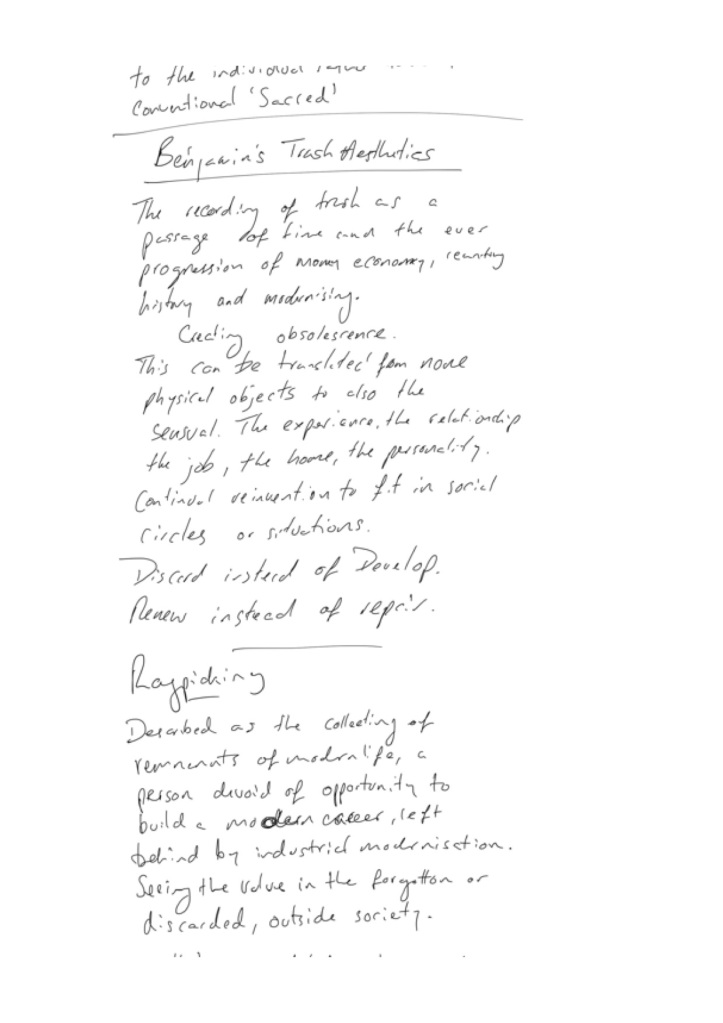

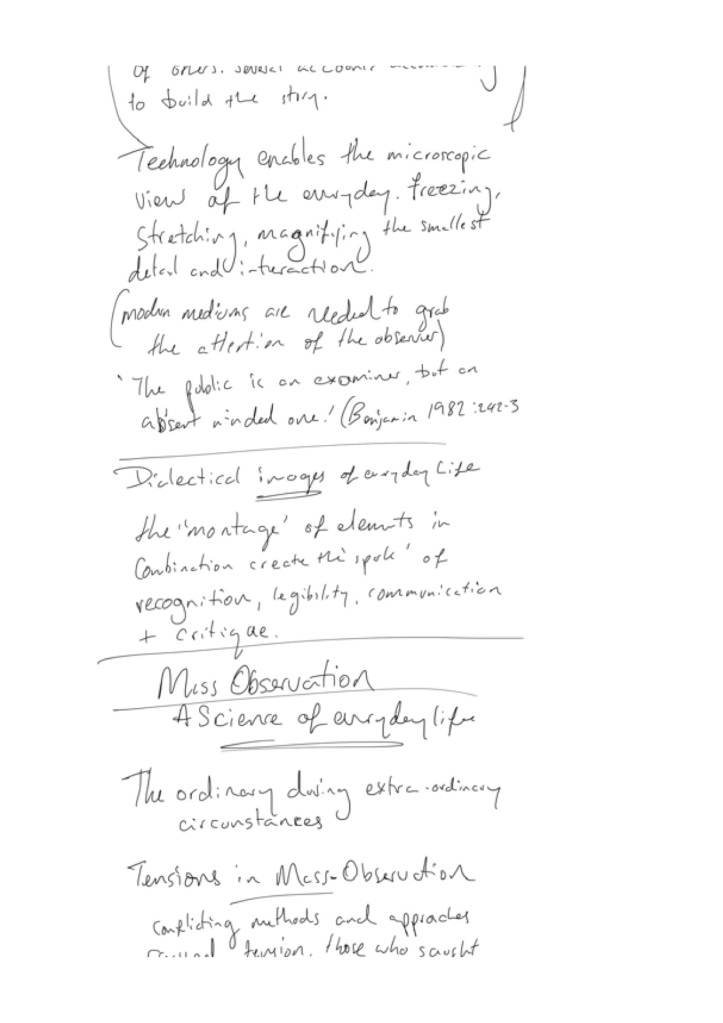



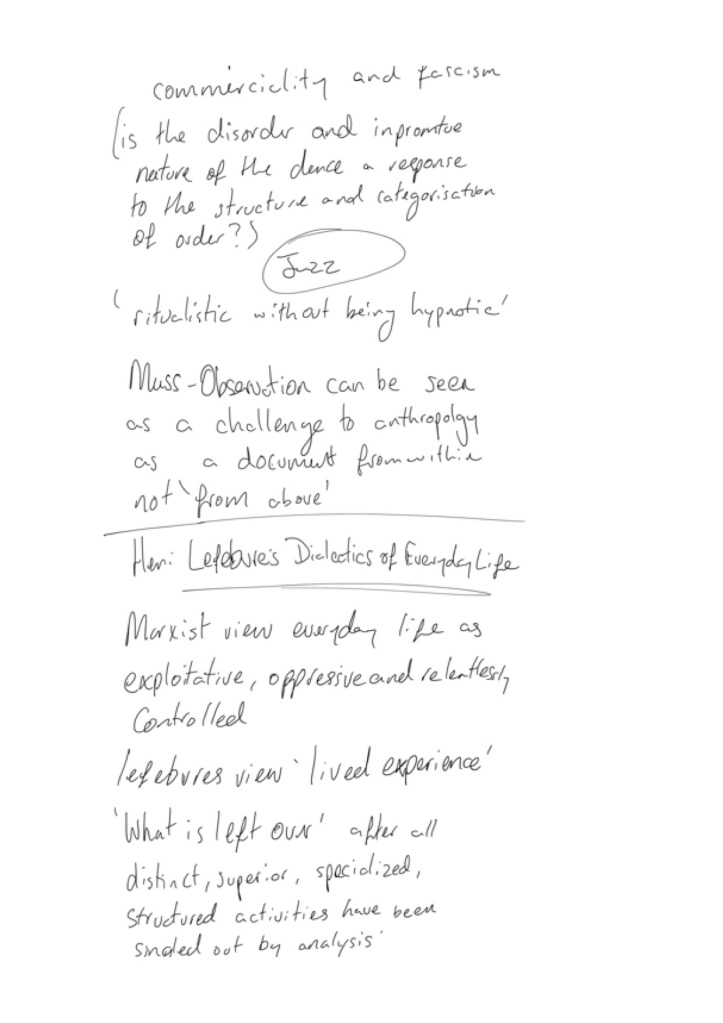

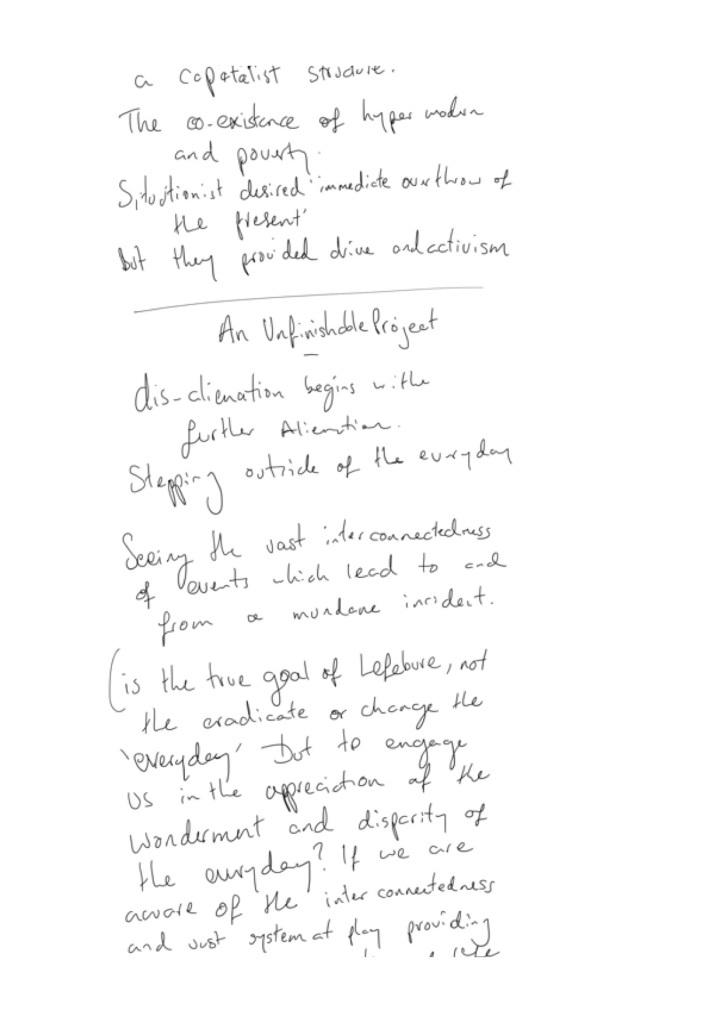



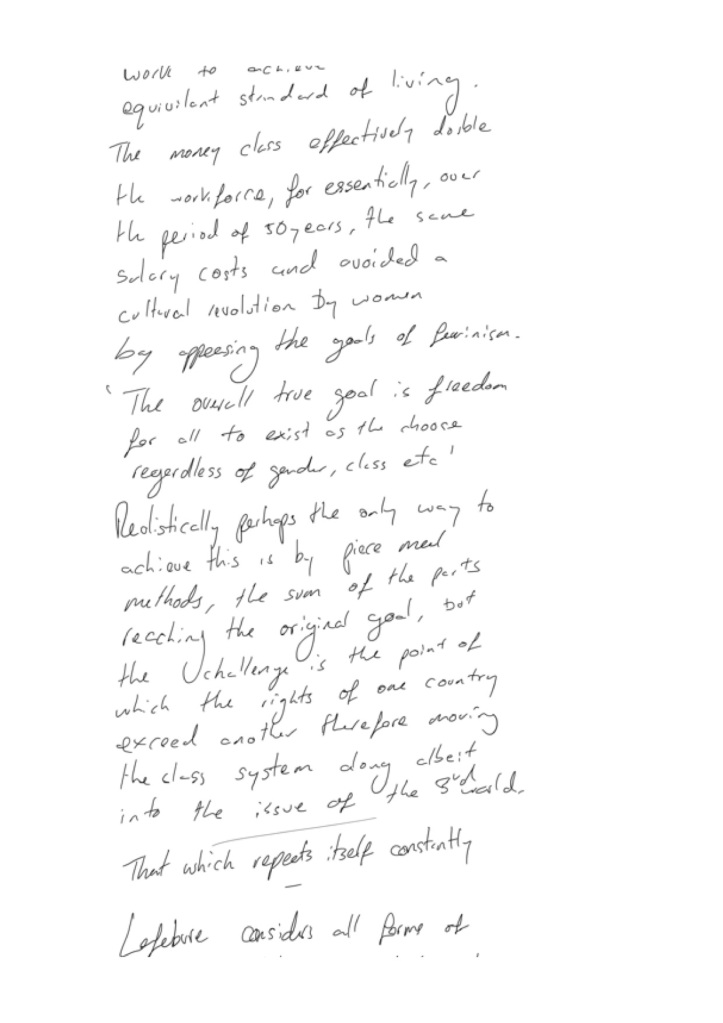

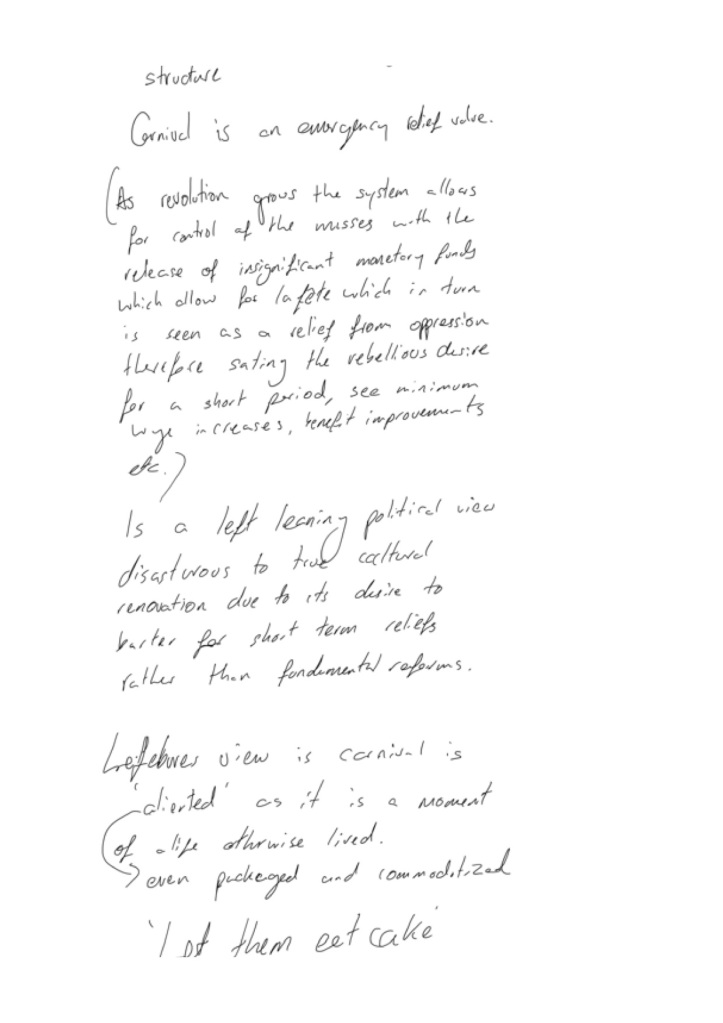





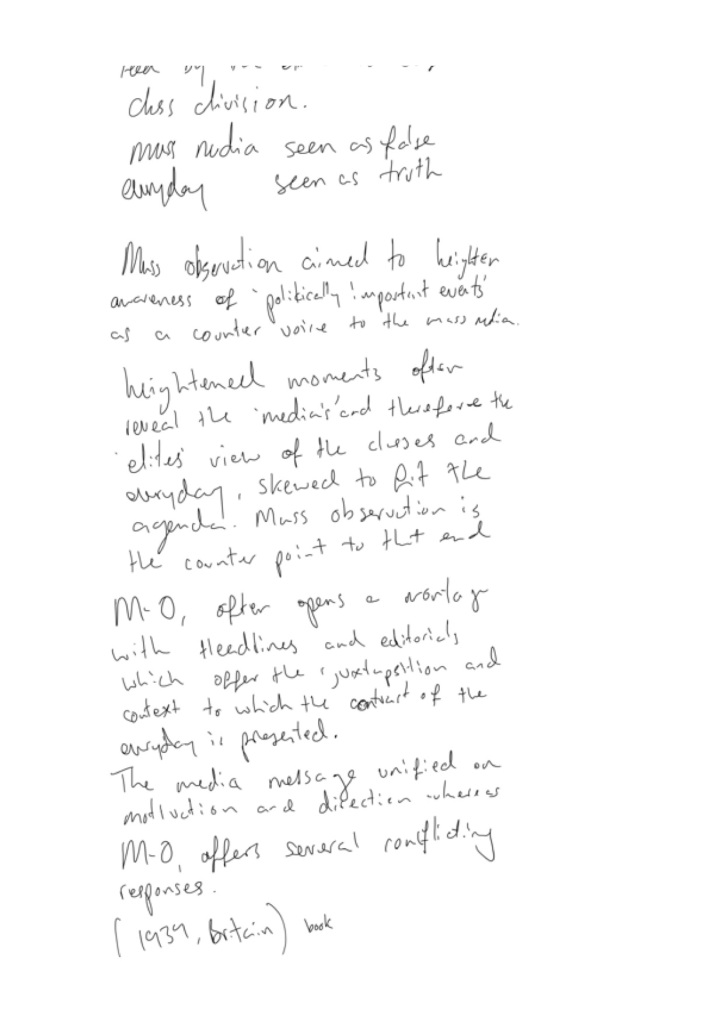
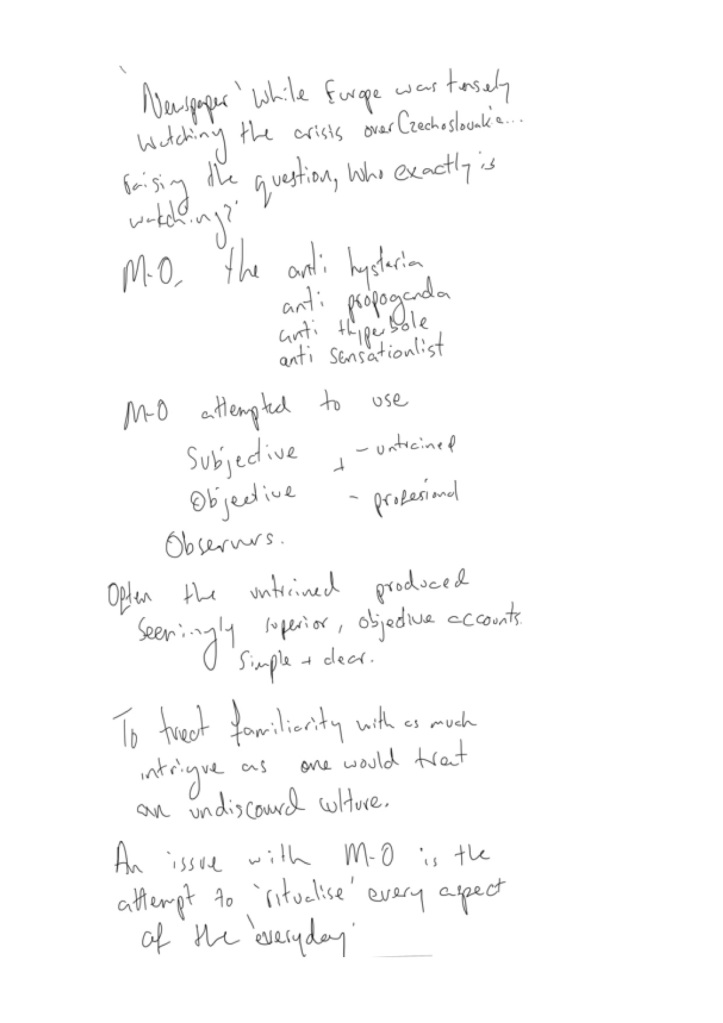


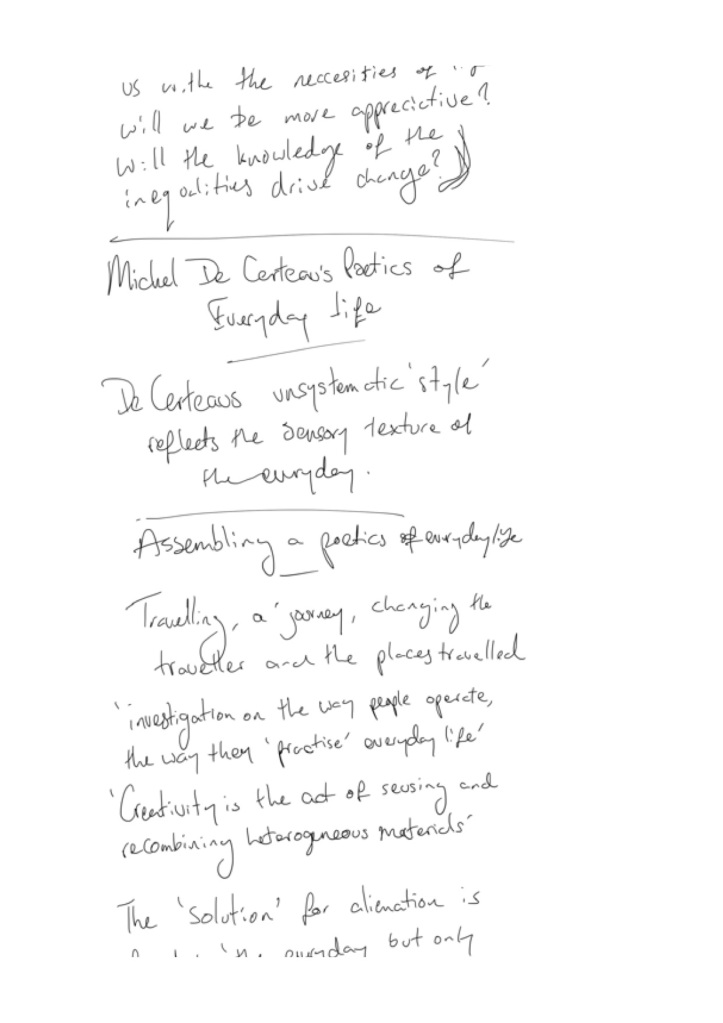




It sounds like an interesting book Harley and it looks like you have made a pretty good summary. I have empathy with your note taking, I am only just starting C&N as you know and seems I have to read things multiple times and had write them out to try to get it to sink in! The book looks an interesting read but I feel a bit swamped at the moment however, will keep a note of it and try to get to it at some time in the future.
LikeLiked by 1 person
I know where you are coming from with the multiple reads. It’s an good read especially for refining ideas and discovering different theories. I think I would have benefitted from reading it earlier but at the same time it was a heavy read for me so it could be time consuming
LikeLiked by 1 person